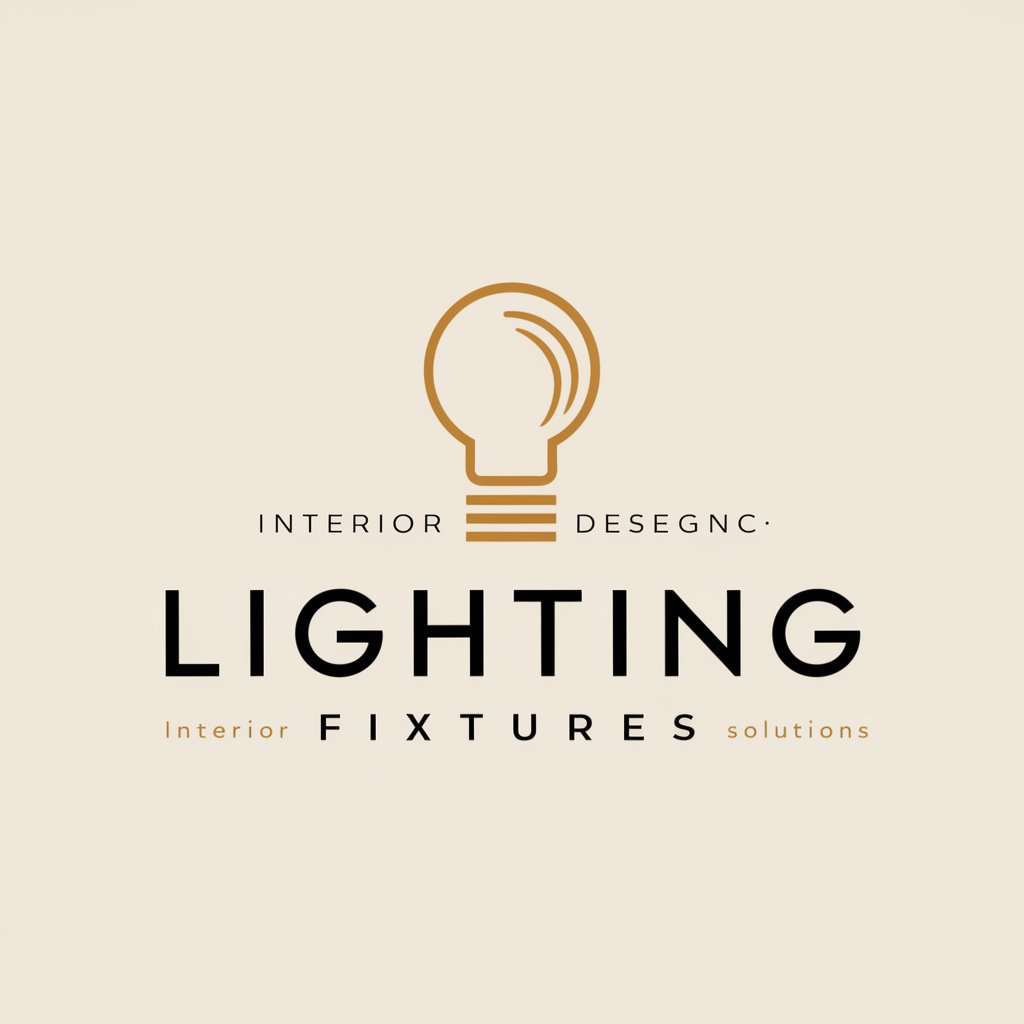Lighting Fixtures - Lighting Fixture Advice

Welcome! Ready to transform your space with perfect lighting?
Illuminate Your Space with AI-Powered Guidance
What lighting fixtures would best suit a modern living room with high ceilings?
Can you suggest some stylish pendant lights for a kitchen island?
How can I use lighting to make a small bedroom appear larger?
What are the latest trends in chandelier designs for dining rooms?
Get Embed Code
Overview of Lighting Fixtures
Lighting fixtures, integral components of interior design, serve both functional and aesthetic purposes. They illuminate spaces, create ambiance, and highlight architectural features or decor. From sleek, modern LED fixtures to ornate chandeliers, the range of designs caters to diverse interior styles. For example, recessed lighting is often used in minimalist homes for a clean, understated look, while pendant lights can add a focal point above a dining table in a more traditional setting. Task lighting, like under-cabinet LED strips in kitchens, provides focused illumination for specific activities, illustrating how lighting fixtures are tailored to various needs and spaces. Powered by ChatGPT-4o。

Functions of Lighting Fixtures
Ambient Lighting
Example
Ceiling-mounted fixtures or chandeliers
Scenario
Used to provide a base layer of light in living rooms, enhancing overall illumination and creating a welcoming atmosphere.
Task Lighting
Example
Desk lamps, under-cabinet lighting
Scenario
Focused lighting for activities like reading or cooking, minimizing shadows and reducing eye strain.
Accent Lighting
Example
Wall sconces, track lighting
Scenario
Highlights artwork, architectural features, or collectibles, adding depth and dimension to a room.
Decorative Lighting
Example
Statement chandeliers, unique pendant lights
Scenario
Serves as a visual centerpiece, enhancing the room's aesthetics and reflecting personal style.
Who Benefits from Lighting Fixtures Services
Homeowners
Individuals looking to enhance their living space's functionality and aesthetic appeal. Lighting fixtures can transform the ambiance of a room, improve usability, and reflect personal style.
Interior Designers
Professionals focused on creating cohesive, well-lit spaces for clients. They rely on a variety of lighting fixtures to achieve the desired mood and functionality for each project.
Architects
Architects integrate lighting into their designs to highlight structural elements, influence spatial perceptions, and ensure environments are well illuminated for safety and comfort.
Business Owners
Retail, hospitality, and office settings require specific lighting solutions to create welcoming environments for customers and productive spaces for employees.

How to Use Lighting Fixtures Effectively
Start Your Journey
Begin by exploring lighting options without obligations by visiting platforms like yeschat.ai, offering free trials without the need for login or a ChatGPT Plus subscription.
Identify Your Needs
Evaluate the space you're looking to illuminate. Consider factors like room size, ceiling height, and the desired ambiance. This will guide you in selecting the appropriate type of lighting fixture.
Choose the Style
Decide on a lighting style that complements your interior design. Whether it's modern, industrial, or traditional, the right lighting can enhance the overall aesthetic of your space.
Consider Functionality
Think about the purpose of the lighting. Are you looking for ambient lighting, task lighting, or accent lighting? This will determine the fixtures you select and their placement.
Installation and Adjustment
Once you've selected your fixtures, ensure proper installation, preferably by a professional. After installation, adjust the lighting as needed to achieve the perfect look and feel.
Try other advanced and practical GPTs
Marketing Leadership Mastery
Strategize, Analyze, and Optimize with AI

Elvis, I Don't Love You Anymore meaning?
Unveiling the Depths of Language

English-Italian Translator
Seamless AI-Powered English-Italian Translations

Sofy
Empowering Conversations with AI

爆笑 AI 似顔絵師ぽんす
Humorous, AI-Crafted Anime Caricatures

Amends companion
Empowering emotional amends with AI

English-Mandarin Chinese Translator
Seamless AI-powered English to Mandarin translations.

English-Urdu Translator
Bridging Languages with AI

Dutch-English Translator
Bringing languages together with AI-powered fun

Arabic-English Translator
Bridging Cultures with AI-Powered Translation

Yellow Brick Road meaning?
Empowering Your Ideas with AI

Unity Coder
Streamlining Unity Development with AI

Frequently Asked Questions About Lighting Fixtures
What types of lighting fixtures are best for a living room?
For living rooms, a combination of ambient, task, and accent lighting works best. Consider ceiling fixtures, floor lamps, and wall-mounted lights to create a versatile and welcoming space.
How do I choose the right size chandelier for my dining room?
Measure the length and width of your dining room in feet, add those numbers together, and convert the total into inches. This number should approximate the diameter of your chandelier to ensure it's proportionate to the space.
Can LED lights be used in any fixture?
Most modern fixtures are compatible with LED bulbs. However, ensure the fixture can handle the LED wattage and check if it requires a specific bulb shape or base type.
How can I use lighting to make a small room appear larger?
Use multiple light sources to create depth, including wall sconces and floor lamps. Mirrors can also reflect light, making the space appear larger and more open.
What's the best way to reduce glare from overhead lighting?
To reduce glare, choose fixtures with diffusers or shades that direct light downward. Dimmer switches can also help by allowing you to adjust the light intensity according to your needs.
